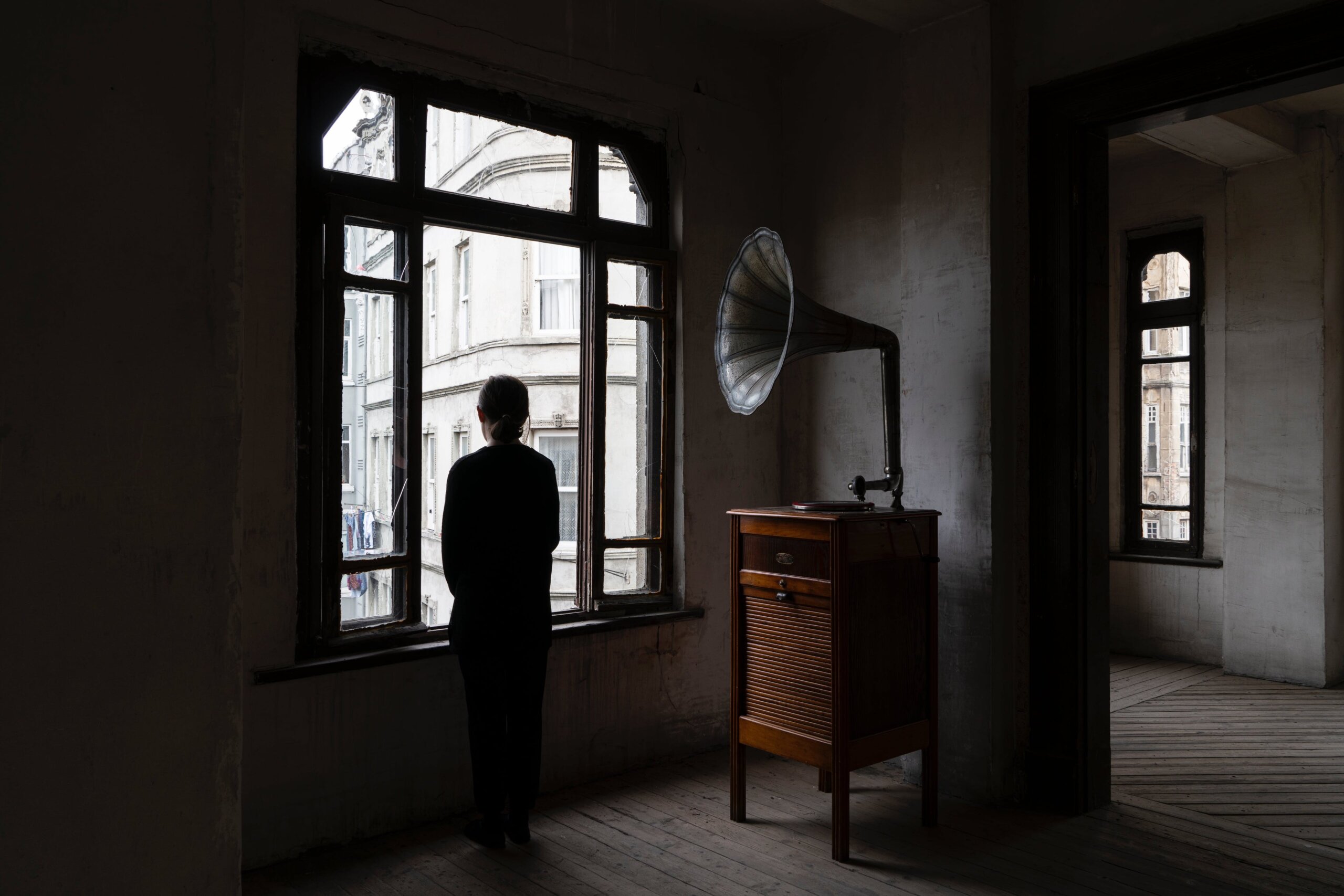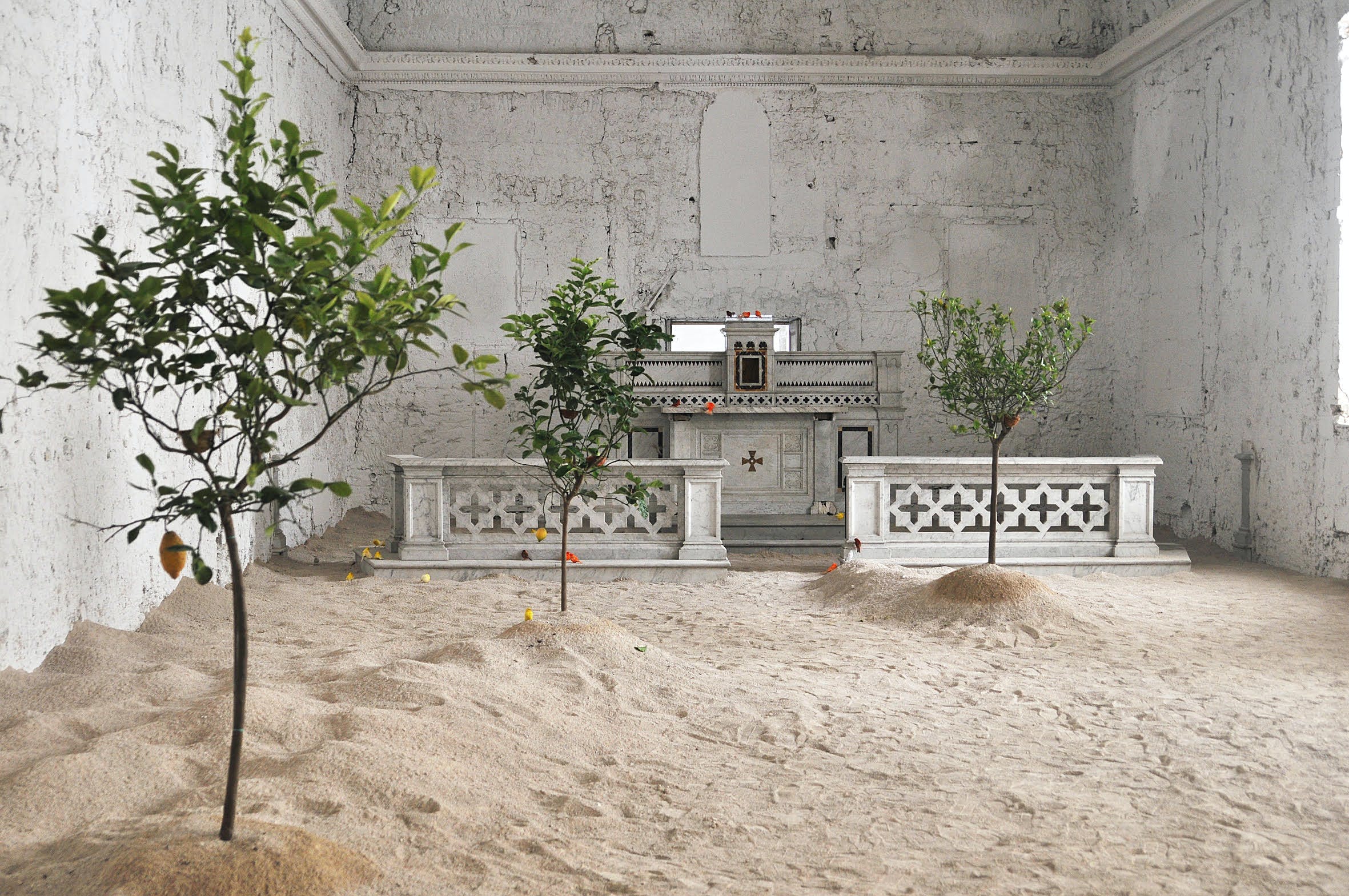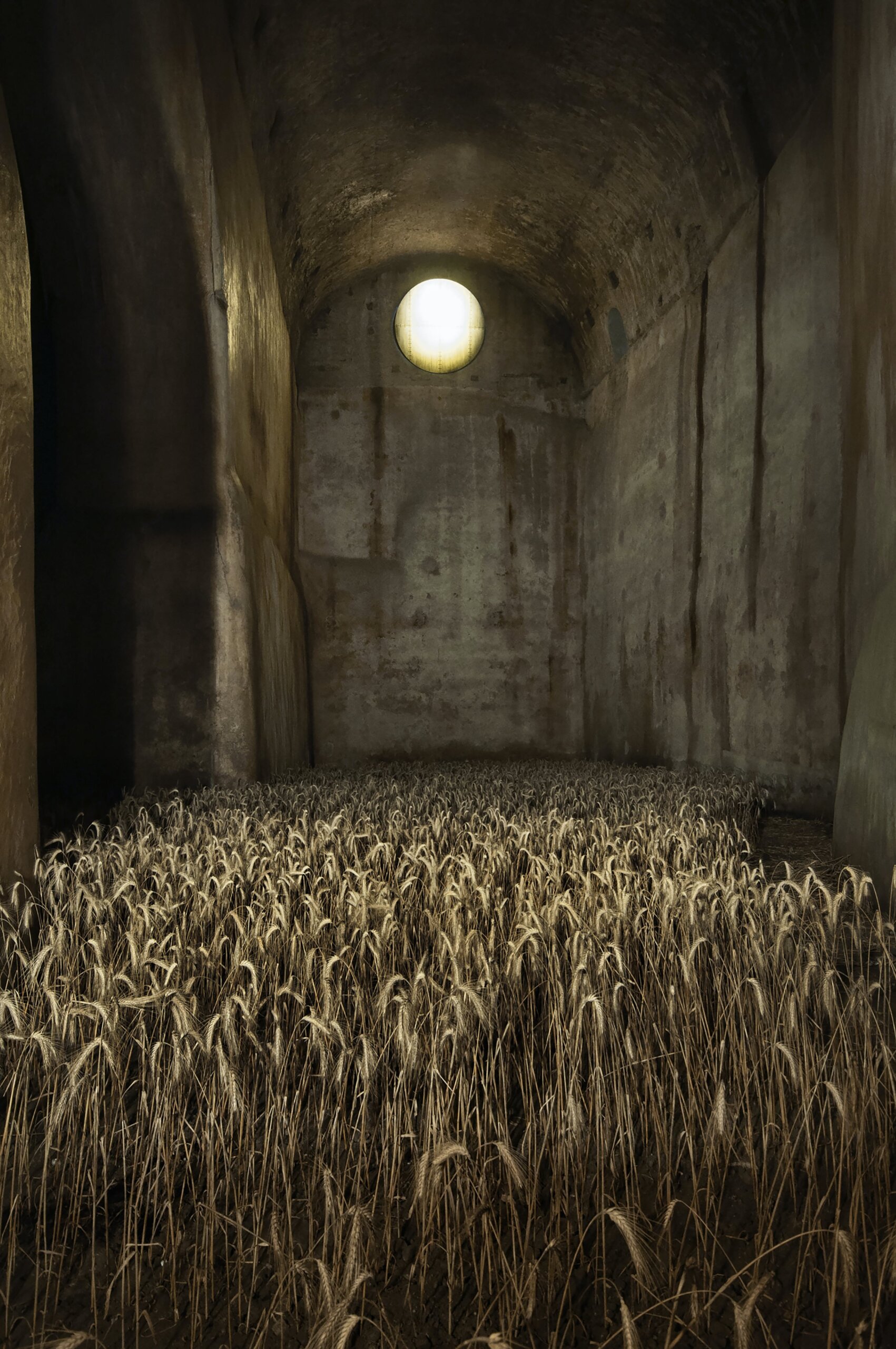Eugenio Viola in conversation with Gian Maria Tosatti
Gian Maria Tosatti
You often exhibit in many different urban contexts. What are your expectations in showing your artwork at the Venice Biennale? Especially for the first time being the only artist occupying the challenging spaces of the Italian Pavilion.
Of course, there is a difference showing a work in a living context or in a museum (or a “special place” like the Arsenale), but every work, even decontextualised, is always nurtured by the reality we all live. In this perspective I don’t expect any significant difference between this work and the others in the perception of the visitors. I’m always facing the same community, the one of the many which share these times with me.

Usually, your artworks come out of in-depth research of the context in which you are going to realise them. You like to define yourself as a translator of the things you have around you and that you feel the need to talk about, but not as an author. How has your creative process changed for this pavilion? Could we say that your research started in a neighbourhood and has now reached the whole of humanity?
Oh, no. I think that this process of de-zooming from micro to macro is always rooted into my work. If I focus on a specific aspect of a little village lost in the desert, is always because in that detail I see the archetype of a largely shared trauma. When I worked on my Riga Episode (for the project “My Heart is a Void, the Void is a Mirror”) I felt so close to problems that we are facing every day on the other side of Europe. This project for Venice is the same. I started collecting images from the province of Italy and today, during these days of war, I see interior landscapes of my beloved Ukraine inside the pavilion. Here you see why I say that I’m a translator. I never mean to speak about something. I just try to show something that connects all of us. Because I don’t really know how it works in what people calls art, but I know that in life, in politics, everything is connected. The crisis between Russia and Ukraine is not a regional thing. It is a symptom of a larger state of confusion that involves the whole world. We are all living a defeat. The same defeat looks different in different areas of the planet, despite how it looks, it is a unique thing. This is why we can’t really feel alien to one another’s problems.

Your works are projects linked to the concept of personal identity and human actions in society. For the Venice Biennale, you thought of structuring your work with a theatrical syntax, as often happens in your artworks, an immersive installation, an experiential narrative machine structured like a theatre set in 2 acts: 1) the Story of the Night and 2) the Destiny of Comets. What is, for you, the link between man as a single individual with rights and duties towards others, and the theatre?
Oh, well, theatre has been the first way for people to represent themselves in a participated ritual. It was the very first mirror. The Greek Tragedy was essentially this. I still work on the deep mechanic of the Tragedy, because it is a ritual and even a state of necessity. It is a formula that allows people to tell the truth to themselves, after having lied and lied, after having learned to lie and believe in their own lies. There is always a moment in which you need to confess – like in “The Portrait of Dorian Gray”. There is always a moment in which you need to open the forbidden door and face a real mirror. The Tragedy is the original formula of that mirror. But it does not need to be displayed on a stage. A painting can be a Tragedy, a symphony (like Beethoven’s Ninth) can be a Tragedy. So even an ambient installation can. The link with theatre in my work is not so exterior. It is something very deep. It is not in the shape. It is in its blood.

I was delighted to hear that you planned to focus on optimism – on the future, on hope, as I understood it, despite the fact that the world community has had to deal with pandemics, epidemics, and political and social replies have not always been efficient and quick, especially with those who needed help the most. What could an artist do today to infuse hope and the courage to evolve?
Not an artist, but a mirror. What could a mirror do to infuse hope and courage? Well, think about any one of us, in front of a mirror. You can see yourself looking tired, older, wounded,
weaker, but you can also see in the depth of your eyes the same will to keep going with your path, because after all, you will never be able to give up. If you can see that in your eyes it means that you haven’t lost yourself, even if your face is unrecognisable after all the things that life did to you. In the work that I’m presenting in Venice, it is the same thing. If we are still able to feel pity for a flower or a little insect, well, it means that we are – and always will be – living creatures and not yet zombies.




